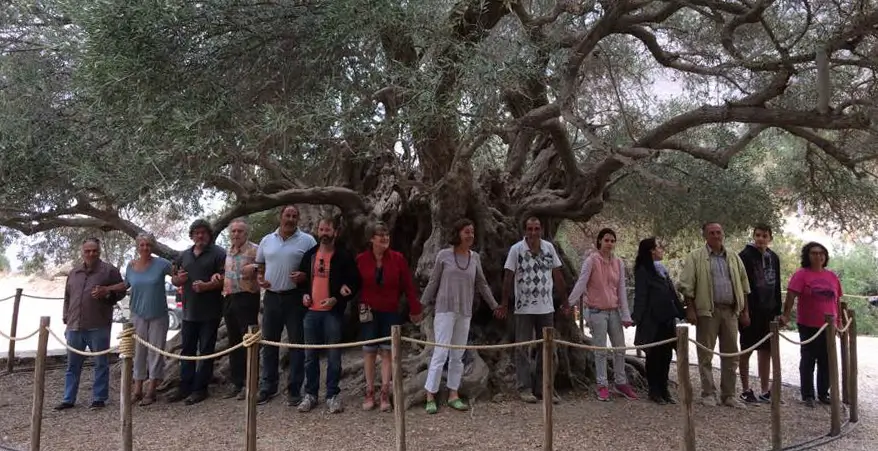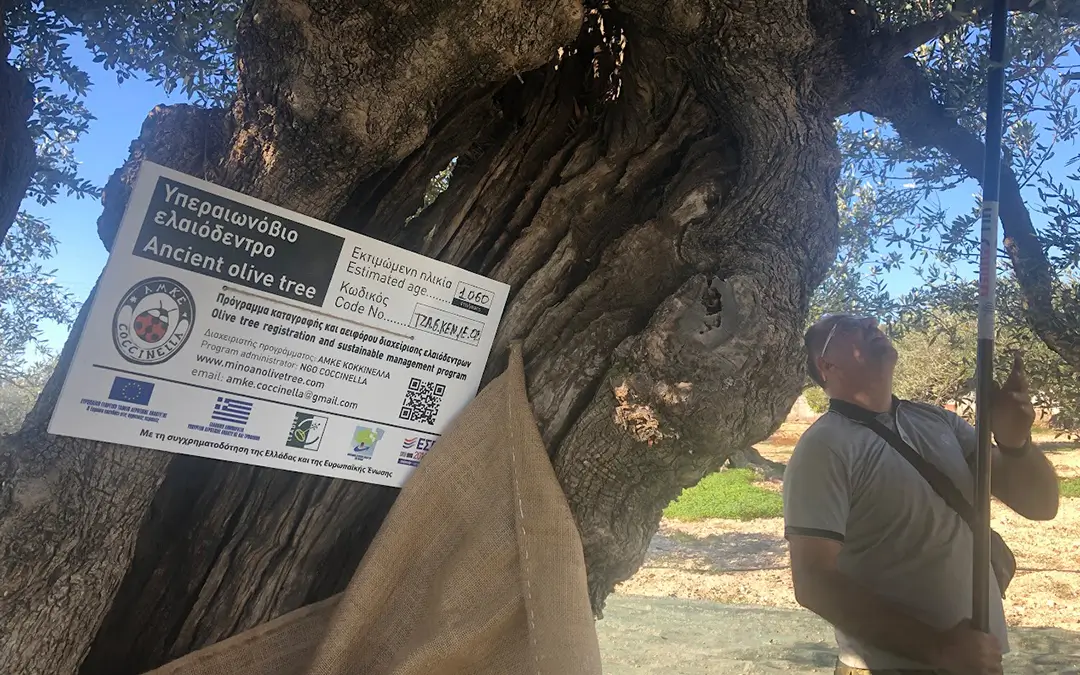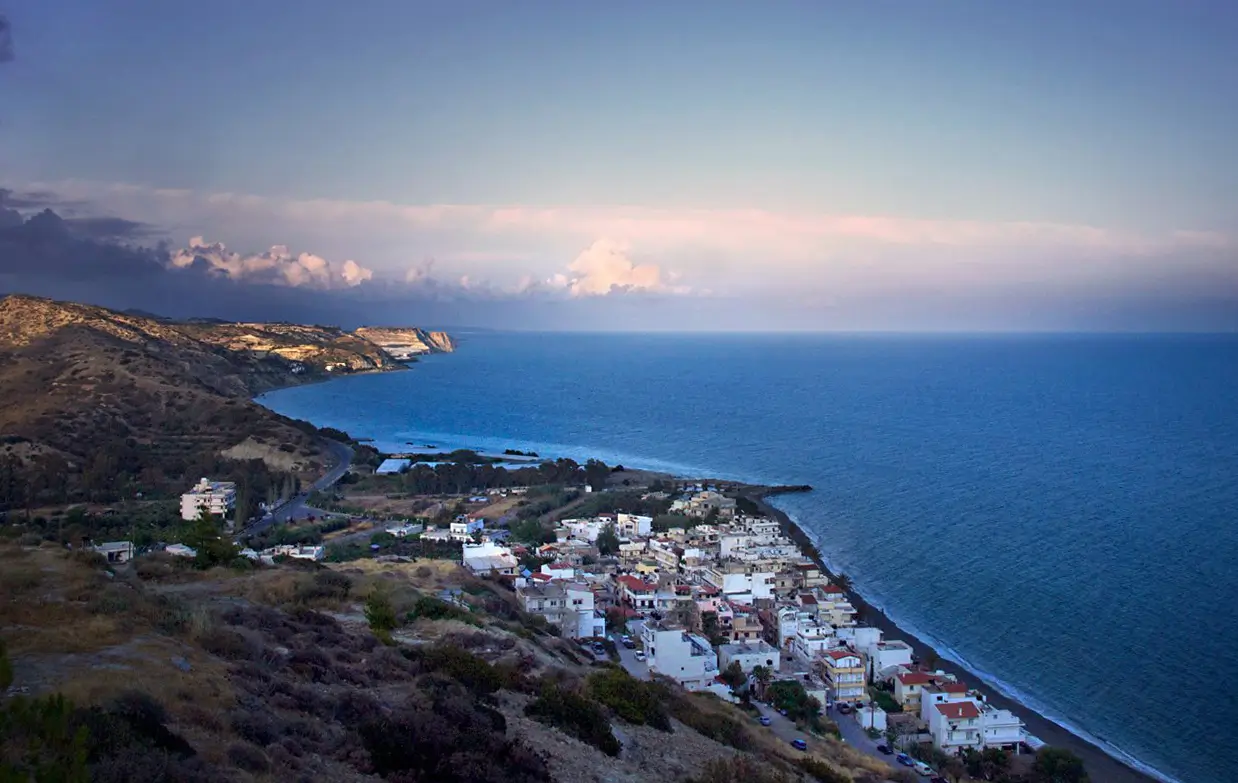Products – Innovation
With an initial capital of two thousand olive trees, we engage in olive oil production and the creation of aromatic olive oils (nine different varieties), processing vegetables and creating chutneys, jams, and vegetable juices. We also produce a balm made from organic olive oil and beeswax and have a significant investment in bees that provide us with high-quality Cretan honey from the aromatic herbs and pine forests of Crete. We leverage tradition and apply new knowledge to create unique and innovative products. We support producers who share the same philosophy and mindset to protect nature and produce better products for our families.
Our products are of exceptional quality, with numerous international awards, but they are produced in limited quantities that can be scheduled to meet the demands of our consumer friends.
INTERNATIONAL AWARDS:
20th International Competition “Les Huiles du Monde”, AVPA-Paris 2022
Category Blended and Flavoured Oils
- SILVER MEDAL 2022: Rose-infused Olive Oil: EPTASTIKTOS, producer: Giorgos Tomadakis, Aitria
- BRONZE MEDAL 2022: Basil-infused Olive Oil: EPTASTIKTOS, producer: Giorgos Tomadakis
AUTHENTIC TASTE OF GREECE AWARD 2021
- GOLD MEDAL 2021: Chutneys & vegetable jams, produced by the member producer of the EPTASTIKTOS Social Cooperative Manos Kalivas through his company Delikreta flavours.


Ancient Olive Trees
Some of them, in their shade, have hosted even Minoans. They have felt on their trunk many conquerors; their roots are watered with sweat, tears, and blood, they have nourished our ancestors, they have lived and accompanied generations and generations, even many of us.
Until today, they stand as irrefutable and living witnesses of our history. They have much to tell us. We often pass by them.
Let’s listen to them as they speak to us… Let’s make them a gift to our children and grandchildren, let’s give them the opportunity to love them and to be loved. They are our heritage and our culture.
Throughout Crete, many ancient olive trees are preserved, some of which date back to Minoan times.
The oldest of all is estimated to be the olive tree of Kavousi in the Lasithi prefecture, where our cooperative operates. Dating back to the 15th century BC, it has a base perimeter of 22.10m, a base diameter of 7.10m, coordinates 35.11521, 25.86077 or 35°06’54.8″N 25°51’38.8″E, and an altitude of 252m. In the prefecture of Lasithi, there are scattered hundreds of ancient olive trees, many of which often create clusters of distinct olive groves. Many date back to Minoan times, others were planted (or grafted onto wild olive trees) during the Roman era, and many were planted with the arrival of the Venetians in the 13th century BC. Many were also planted at the end of the 16th century with the encouragement of the Turks to supply raw materials to soap factories or to be exported to Marseille.

As part of our efforts to highlight our cultural heritage, we have initiated a program to record ancient olive trees with the aim of protecting and making them visitable with appropriate signage and route planning. At the same time, we organize activities (seminars, musical events) aimed at raising awareness among residents. Selected olive trees are marked with a special sign informing visitors.
Recording – Highlighting
With the selfless contribution of the cooperative members and in collaboration with the owners, 300 ancient olive trees with an average age of 1800 years have been recorded to date. The recording includes communication and acquaintance with the producer, photographing the tree and taking coordinates, measuring dimensions (base perimeter and perimeter at a height of 0.90 meters) to estimate the age, as well as collecting other information concerning local history, management, and cultivation practices applied.
Adoption Program – Adoption of Ancient Olive Tree
We contribute to the protection of ancient olive trees. We become adopters of one of them, give it a name, learn about its care, and meet and share stories with the owner – a local producer. We get to know the real Crete and unite our journey. Our bond: the ancient olive tree.
We can visit it, taste its oil, and stay overnight in the area. An annual fee is paid depending on the services provided.
Levels of Adoption – Sponsorship Program
BASIC: Adoption of an ancient olive tree. Includes issuance of a relevant certificate, placement of a plaque with the details desired by the adopter, acquaintance with the owner-producer, provision of information regarding the tree’s cultivation care, and finally, a visit to the olive tree if the adopter wishes to visit the area.
Upgraded levels where, in addition to the basic, you can have more services.
BASIC + offering of 10 liters of olive oil from the producer.
BASIC + TWO overnight stays for 2 people in a local accommodation.
BASIC + OLIVE OIL + 2 OVERNIGHT STAYS for 2 people.
For all LEVELS, there is the right to participate in the olive harvest from the ancient olive trees, every year on the World Olive Day at the end of November in collaboration with the producers. Through adoption, we financially support the producers and local communities, protecting the olive trees.
Note: Shipping costs within Greece and depending on the area are included in the olive oil offering. VAT is charged for the issuance of an invoice (13% for olive oil and 24% for services).
Olive Oil Production
We gather the fruit from the ancient olive trees every year on World Olive Day at the end of November in collaboration with individual producers. This event serves as a magnet for visitors, as well as a cause for several celebrations in honor of this day. The fruit is processed through cold pressing, and the extra virgin olive oil is standardized in special limited edition packaging. The proceeds are allocated to support the producers and finance related planning. Additionally, a portion of these profits goes towards supporting the Ierapetra Hospital. This is a globally unique heritage, a vast and unknown cultural asset: We work towards their protection and promotion, for the benefit of the local community.
Cultural Routes
In addition to its productive activities and sustainable management of Crete’s ancient olive trees, EPTASTIKTOS has designed six cultural routes in local districts of Ierapetra, which together form a unified network. Through these routes, visitors can explore the cultural characteristics of the settlements, interact with the locals, discover the natural environment, and admire ancient olive trees. To date, over 300 ancient olive trees have been recorded, with an average age of 1800 years.
The Cultural Routes range from 3 to 10 kilometers and include four stops, where thematic workshops are held.
- 1st Stop: We always meet in a beautiful area and at the meeting point, participants get to know each other through icebreaker games and reflection. Using worksheets such as the program’s expectations sheet and the reflection workshop, constructive discussions are held about people’s lives today compared to those of earlier times.
- 2nd Stop: Visit to an ancient olive grove. We walk along a marked trail with ancient olive trees. Information is provided through a card game about the olive tree, its properties, the products produced from it, History, Culture, and Literature. At the end, we listen to relevant musical compositions, and if there is enthusiasm, the group dances.
- 3rd Stop: We learn the technique of recording the age of an ancient olive tree, and then, through a scenic representation, the group presents an event that may have occurred at the time when these particular olive trees were planted. This is followed by an energy exercise for our mental upliftment and connection with the ancient olive trees.
- 4th Stop: Depending on the route, we visit a handicraft workshop, engage in discussion with the producer, and learn about how such a workshop is established and operated. The process of connecting producers with consumers without intermediaries is discussed, and we proceed to a tasting of local products, handicrafts, and olive oil from local producers.
At the end of all cultural routes, there is an evaluation of the program and a discussion to highlight the conclusions of the meeting.
HIDDEN
[hidden]
Saint Stefanos
Saint Stefanos is a mountainous village, formerly part of the Sitia Province, administratively belonging to the municipality of Ierapetra today. It is located on the southern slopes of the Thripti mountain, which is part of the European NATURA 2000 network. It is 30 kilometers away from both Ierapetra and Sitia.
Perched at an altitude of 453 meters, the picturesque settlement of Saint Stefanos is a characteristic example of the mountainous culture of the Cretan people. Its privileged location offers a unique view of the Libyan Sea, while within a distance of less than six kilometers, residents and visitors can enjoy the beautiful beaches of Makry Gialos.
Its current name owes to the impressive church of Saint Stefanos, which stands out for its unique architecture, both inside and out. This is the main point of reference for the village, with the small square next to it gathering the residents at its cafes. Saint Stefanos stands out for its dense construction and its labyrinthine cobblestone streets. Impressive is the Kimeri, the renovated fountain of the village with its characteristic arched construction, where women used to wash their clothes during times when water had not yet reached the houses of the settlement.
On the rugged and steep hilltop above the village once dominated the “Kastelos” or “Fortetsa”. It was a Venetian fortress believed to have been built on the foundations of an ancient acropolis, probably from geometric times.
The cafes in the area host all kinds of events from flea markets during the day to evenings of lyre and bouzouki lessons for the foreigners of the area. A characteristic example is a resident who is from Belgium, who after traveling all over Crete, ended up permanently settling in Saint Stefanos to set up his own small observatory, where anyone can now enjoy the starry sky throughout the year.
Orino
The village Orino is called so because of its mountainous location. The locals pronounce it Orno. It is said that it may have taken its name from the many eagles nesting in the area. The Golden Eagle, known as Ornio, is a protected species as it is threatened with extinction. In the Venetian census of 1583, the village was referred to as Orno and had 217 inhabitants. The British archaeologist Evans mentions the presence of ancient remains in the locations of Lenika and Skafi. There is a place name Solomos, perhaps from the Solomos family that once existed there and the ruins of an old tower. In the Early Christian church of the Transfiguration of the Savior, there was an inscription that read “A Byzantine general arrived here.”
The village is full of springs, water, and forests, where one of the most rushing rivers of Crete is encountered. Its sources are located high in the Ampelia plateau on the slopes of Thriftas and Papoura. They quickly form a river, which after crossing the village square, enters the rugged Gorge of Orneo. The river continues its flow to create the main hiking section, the Gorge of the Red Butterflies, which exits at Koutsouras after 3-4 hours of hiking. Despite suffering major damage from a fire in 1993, vegetation is still intense, and the gorge remains a green lung. The Gorge of the Red Butterflies is easily accessible, well-marked, with a visible path, which essentially starts from the Byzantine church of Christ. During the winter and spring months, due to its greenery, waters, lakes, and waterfalls it creates, it is a place of unique beauty. During the summer months, because a large part of it is exposed to the sun, it becomes more difficult and one needs to carry plenty of water and wear a hat. Its name is due to the red butterflies that flutter through the bushes, but unfortunately, in recent years their population has decreased significantly. Along the route, besides the natural attractions, you will also encounter the church of the Lord Christ and the old frescoed chapel of Saint Dimitrios, which dates back to the 12th century.
Kato Chorio
The Isthmus of Ierapetra is located equidistantly (7 km) from the North and South Cretan Seas. It comprises the villages of Episkopi, Kato and Pano Chorio, Papadiana, and the settlement of Thryptis.
Inhabited since Neolithic times, much of the community has been designated an archaeological site. The oldest idol of an ancient goddess (5700 BC) was found near Kato Chorio and is now in the Heraklion Museum.
Throughout history, the villages played a significant role due to their strategic position (at the gates of the city of Ierapetra from the North) and their developed agricultural economy. The Turkish castle of Kazarma (=camp) in Episkopi and the Italian artillery at the entrance of Kato Chorio are preserved. Architectural elements from the Venetian period and the Ottoman era are also evident in many stone-built buildings. In the square of Episkopi, the central church was the seat of the Episcopy of Ierapetra (hence the name of the village) and was built in the early 20th century on the site of Panagia Eftatroulis (with seven domes). Many structural elements from the older church were used. Near this square, we find the church of Agios Georgios and Agios Charalambos, with a magnificent wood-carved iconostasis, the left aisle of which was built in the 11th century, and the rest in the 16th. All the villages and the surrounding countryside are adorned with small picturesque chapels.
Parts of the old olive presses are also preserved in scattered villages, especially Kato Chorio, which was a significant head village with considerable wealth due to its developed olive cultivation. The surrounding olive groves are adorned with centuries-old olive trees aged 400 to 1200 years. They are scattered throughout the olive groves, at the edges of fields, and along paths. Several of these, from the Ottoman era, form entire olive groves.
The area and the settlement of Thryptis are also known for their vineyards (some of the oldest in Europe) with the local variety “liatiko.” Even today, in Thryptis, some of the old summer residences (magatzides in the local dialect) of the residents are preserved, where villagers used to stay during the summer months.
There are also several springs that flow all year round, such as in Kato Chorio with the central fountain built in 1903, in the springs of Kefalovryssi in Pano Chorio, and in Thryptis.
Today, depopulation has affected the villages, resulting in approximately 500 residents out of more than 1000, and olive cultivation is declining. It is characteristic that in the 1960s-70s, the primary school of Kato Chorio had over 300 students, and today it has fewer than 50. In recent years, many old stone-built houses are being renovated by Western European citizens who choose the area either for holidays or permanent residence.
The area is ideal for visits and quiet stays, dining in the central squares of the villages, strolling through the picturesque alleys, getting acquainted with rural life and Cretan products, and nature walks such as to the chapel of Prophet Elias in Kato Chorio, Pano Chorio, and the springs of Kefalovryssi, in the settlement of Thryptis.
Kavousi
The village of Kavousi is located in the Municipality of Ierapetra, with a population of approximately 550 residents. Its name possibly originates from the “kavousia,” small water reservoirs from which the villagers distributed water for their basic survival needs. Today, the village has abundant water from mountain springs and boreholes.
It is situated at the foothills of Mount Kapsas, north of the mountain range of Thrypti, at an altitude of 140 meters, and it is 3.5 km away from the sea.
Kavousi boasts sites of rare natural beauty and archaeological interest, such as the Acropolis of Azoria, the Plai of the Castle, Vrontos, the Minoan island of “Pseira,” Chrysokaminos, and a total of 113 other points of interest. It also has 8 Byzantine churches with remarkable frescoes. A prominent landmark is the Ancient Olive Tree of Azoria, the largest known single-trunk olive tree globally, possibly also the oldest. It is the only officially declared monument olive tree (Government Gazette 3912/25-10-2019) and attracts hundreds of visitors daily.
Local products include olive oil, aromatic herbs, vegetables, and wine.
Selakano / Christos
The name Christos, the myth states, derives from an image of Christ found there. It is said that something glimmered on the mountain, and people from Myrtos went up to see what was happening. Where the glimmer was, they found the image of Christ. The area was named Selakano, probably due to its natural position (saddle) between the mountains.
The village is built at an altitude of 550 meters, literally clinging to a rock. It is a place with many waters, featuring a beautiful pine forest, the largest in Crete. It’s not an exaggeration to say it’s the bee garden of Crete, hosting over 130,000 beehives from every corner of the island each year.
The old people knew well the power of nature. Skilled stone builders, they utilized the power of water and used watermills for various tasks. The remnants of these mills still stand. The cemetery and olive press of the village are architectural marvels admired for their design.
Livestock farming, beekeeping, cultivation, olive oil – the area was and remains self-sufficient. Old stories you hear from the locals include how, in the old days, all transactions were conducted using olive oil and okka (a unit of measurement), not currency, then known as the drachma.
The region produced and continues to produce some of the highest quality olive oils, around 500 tons per season. The beans of Selakano are also famous. Selakano is a natural valley in the Southern Dikti, at an altitude of 900 meters. A paradise on earth for those who managed to live there, even for a little while! The entire area is part of the European Natura 2000 network.
Neglected by the care of the state and unprotected from human factors.
In the local community, there are several ancient olive trees over 1000 years old, even over 2000 years old, which testify to the history of the place. Also, ancient oak trees, aged 800-1800 years, have been recorded and marked along the road to Selakano.
Its natural beauty is unique. Its flora as well. An ideal place for young people to learn and for older people to remember all the work that people did in the past and lived a wonderful life alongside nature.
This area traverses one of our cultural paths. Through this route, the visitor will come into contact with age-old olive trees, landscapes of unique beauty, the people of the area and their traditions, while tasting the local products that make Cretan cuisine incomparable and invigorating.
Myrtos
 Myrtos, which has a population of about 500 inhabitants today, according to the engraved stone plaque on the first house built, that of Captain Yiannis Daskalakis of Fasoula, was founded in 1890. Most residents come from mountain villages, primarily from Gdochia. At that time, the inhabitants lived in the mountains, fearing pirates who often raided for plunder and supplies. Near the village, there are many archaeological finds, evidence that the area has been inhabited over time by Minoans, Romans, etc. At the eastern entrance of Myrtos, visitors encounter the archaeological site of Pyrgos Koryfi (2200-1450 BC), while at the western exit, there are the ruins of a Roman villa. To the west, at 3.5 kilometers, lies the archaeological site of Furnos (2800-2200 BC). There is a small archaeological and folklore collection with entrance from the courtyard of the very old church of Agios Antonios (1853). At the eastern end of the village are the river estuaries (bearing various names such as Kryos Potamos, Sarantapigos, Sarantapichos, etc.), which are a protected area included in the network of small wetlands of Greece. At 2 kilometers from the estuaries, a three-arch stone bridge was built in 1889, of incomparable beauty.
Myrtos, which has a population of about 500 inhabitants today, according to the engraved stone plaque on the first house built, that of Captain Yiannis Daskalakis of Fasoula, was founded in 1890. Most residents come from mountain villages, primarily from Gdochia. At that time, the inhabitants lived in the mountains, fearing pirates who often raided for plunder and supplies. Near the village, there are many archaeological finds, evidence that the area has been inhabited over time by Minoans, Romans, etc. At the eastern entrance of Myrtos, visitors encounter the archaeological site of Pyrgos Koryfi (2200-1450 BC), while at the western exit, there are the ruins of a Roman villa. To the west, at 3.5 kilometers, lies the archaeological site of Furnos (2800-2200 BC). There is a small archaeological and folklore collection with entrance from the courtyard of the very old church of Agios Antonios (1853). At the eastern end of the village are the river estuaries (bearing various names such as Kryos Potamos, Sarantapigos, Sarantapichos, etc.), which are a protected area included in the network of small wetlands of Greece. At 2 kilometers from the estuaries, a three-arch stone bridge was built in 1889, of incomparable beauty.
Modern residents are engaged in agriculture and tourism. Excellent olive oil is produced from the many ancient olive trees that exist, while oranges, mandarins, lemons, and mulberries from the plain are of exceptional taste and quality, being the pride of the village. Myrtos has devoted fans who come for vacation every year, enjoying a wonderful climate with mild winters and summers. Its endless beach with black sand hosts many visitors every year, while in the taverns either on the coastal promenade or in the small alleys, everyone enjoys the wonderful Cretan flavours, accompanied by the sounds of live music at a low volume!
Ethical Code – Corporate Responsibility
With our collaborating producers, we develop cooperative relationships based on good faith and willingness from both parties.
Especially for the long-lived olive trees, we strive to instill in their owners the understanding that they essentially do not own the high ownership but their fruition, and that these trees constitute a valuable part of Crete’s cultural heritage, of their family history, and our common goal is their protection, promotion, and the preservation of the trees for posterity.
In the photograph, the record sheet of an olive tree is presented.


# The Village of Myrtos © Vangelis Fragiadakis
